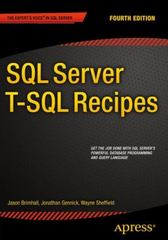Question
QUESTION 1 What is the difference between compile-time binding and run-time binding? 7 points QUESTION 2 float level; int *iptr = &level; Description of Correction:
QUESTION 1
What is the difference between compile-time binding and run-time binding?
7 points
QUESTION 2
float level;
int *iptr = &level;
Description of Correction:
Corrected Line of Code:
7 points
QUESTION 3
Look at the following code.
int x = 7;
int *iptr = &x;
What will be displayed if you send the expression *iptr to cout?
What happens if you send the expression iptr to cout?
7 points
QUESTION 4
Look at the following array definitions.
int numbers[ ] = {2, 4, 6, 8, 10};
What will the following statement display?
cout << *(numbers + 3) << endl;
7 points
QUESTION 5
What is the output for the following code.
int *length;
int *width;
length = new int;
*length = 5;
width = length;
length = new int;
*length = 2* (*width);
cout << *length << << *width << << (*length) * (*width) << endl;
7 points
QUESTION 6
What is the output for the following code.
int x = 50, y = 60, z = 70;
int *ptr;
cout << x << << y << << z << endl;
ptr = &x;
*ptr *=10;
ptr = &y;
*ptr *=5;
cout << x << << y << << z << endl;
7 points
QUESTION 7
Under what circumstances would you successfully return a pointer from a function?You should only return a pointer from a function if it is
| a. | All of the above | |
| b. | A pointer to an object that was passed into the function as an argument | |
| c. | A pointer to a local objected declared in the function as an argument | |
| d. | A pointer to a dynamically allocated object |
7 points
QUESTION 8
Look at the following array definition.
int set[10];
Write a statement using pointer notation that stores the value 99 in set [7].
7 points
QUESTION 9
Rewrite the following loop so it uses pointer notation (with the indirection operator) instead of subscript notation.
for (int x = 0; x < 100; x++)
cout << arr[x] << endl;
7 points
QUESTION 10
int *pint;
pint = new int;
if (pint == NULL)
*pint = 100;
cout << Memory allocation error ;
Description of Correction:
Corrected Line of Code:
9 points
QUESTION 11
int *getNum ()
int wholeNum;
cout << Enter a number: ;
cin >> wholeNum;
return &wholeNum;
}
Description of Correction:
Corrected Line of Code:
9 points (Extra Credit)
QUESTION 12
What math operations are allowed on pointers?
| a. | + | b. | - | c. | * | d. | / | e. | All of the above |
7 points
QUESTION 13
int x, *ptr;
*ptr = &x;
Description of Correction:
Corrected Line of Code:
7 points
QUESTION 14
int ptr*;
Description of Correction:
Corrected Line of Code:
7 points
QUESTION 15
ptr is a pointer to an int, and holds the address 12000. On a system with 4-byte integers, what address will be in ptr after the following statement?
ptr +=10;
Step by Step Solution
There are 3 Steps involved in it
Step: 1

Get Instant Access to Expert-Tailored Solutions
See step-by-step solutions with expert insights and AI powered tools for academic success
Step: 2

Step: 3

Ace Your Homework with AI
Get the answers you need in no time with our AI-driven, step-by-step assistance
Get Started


